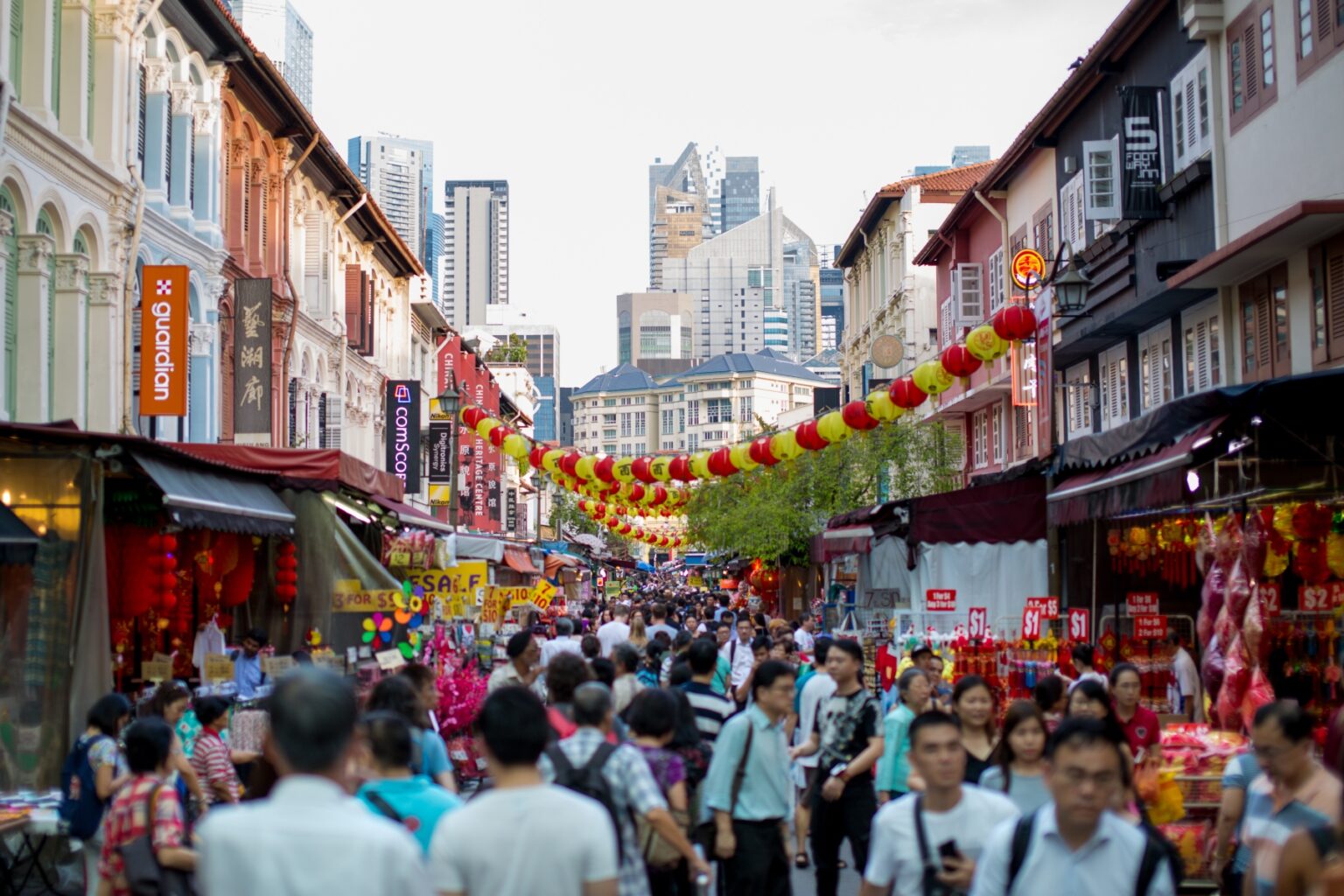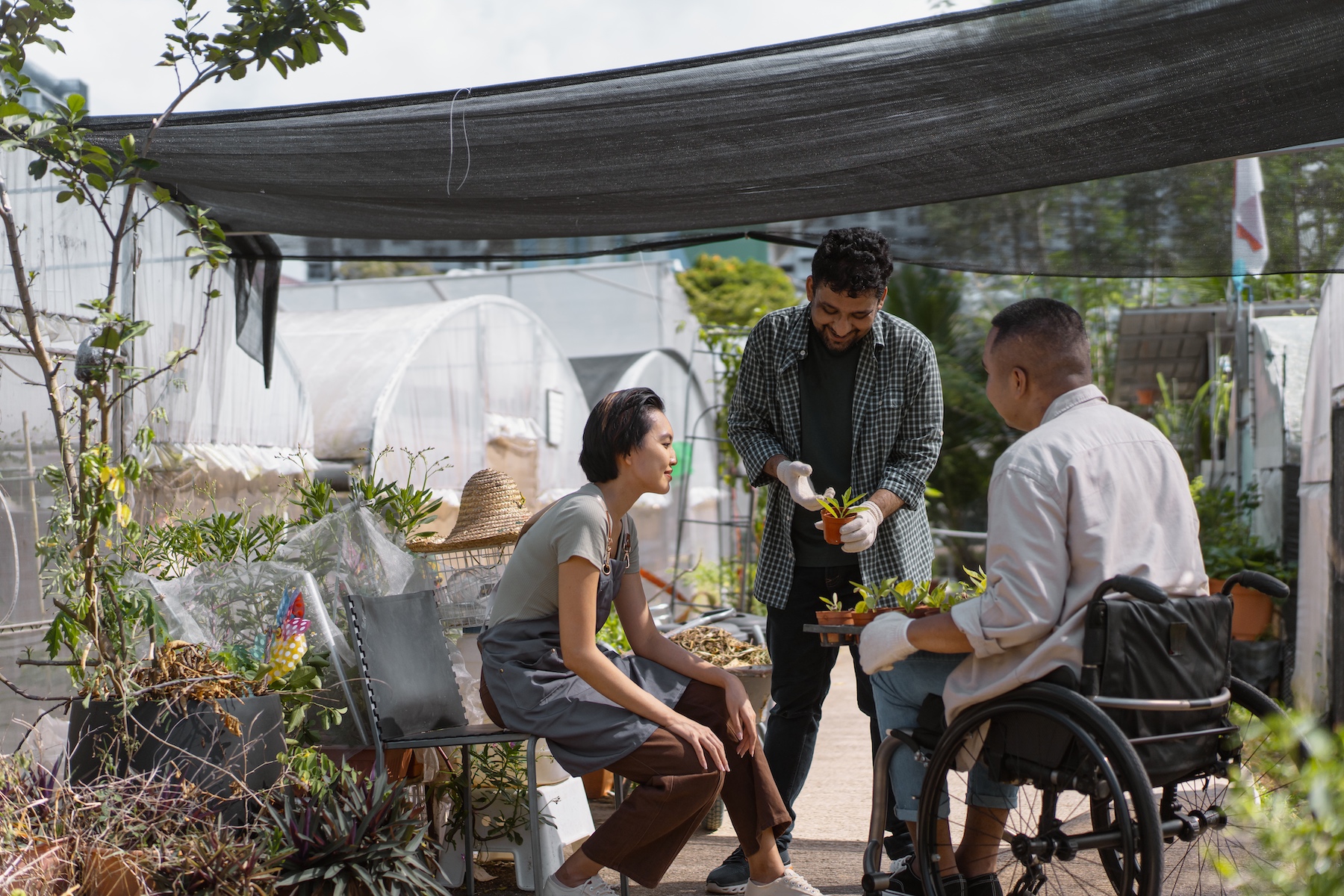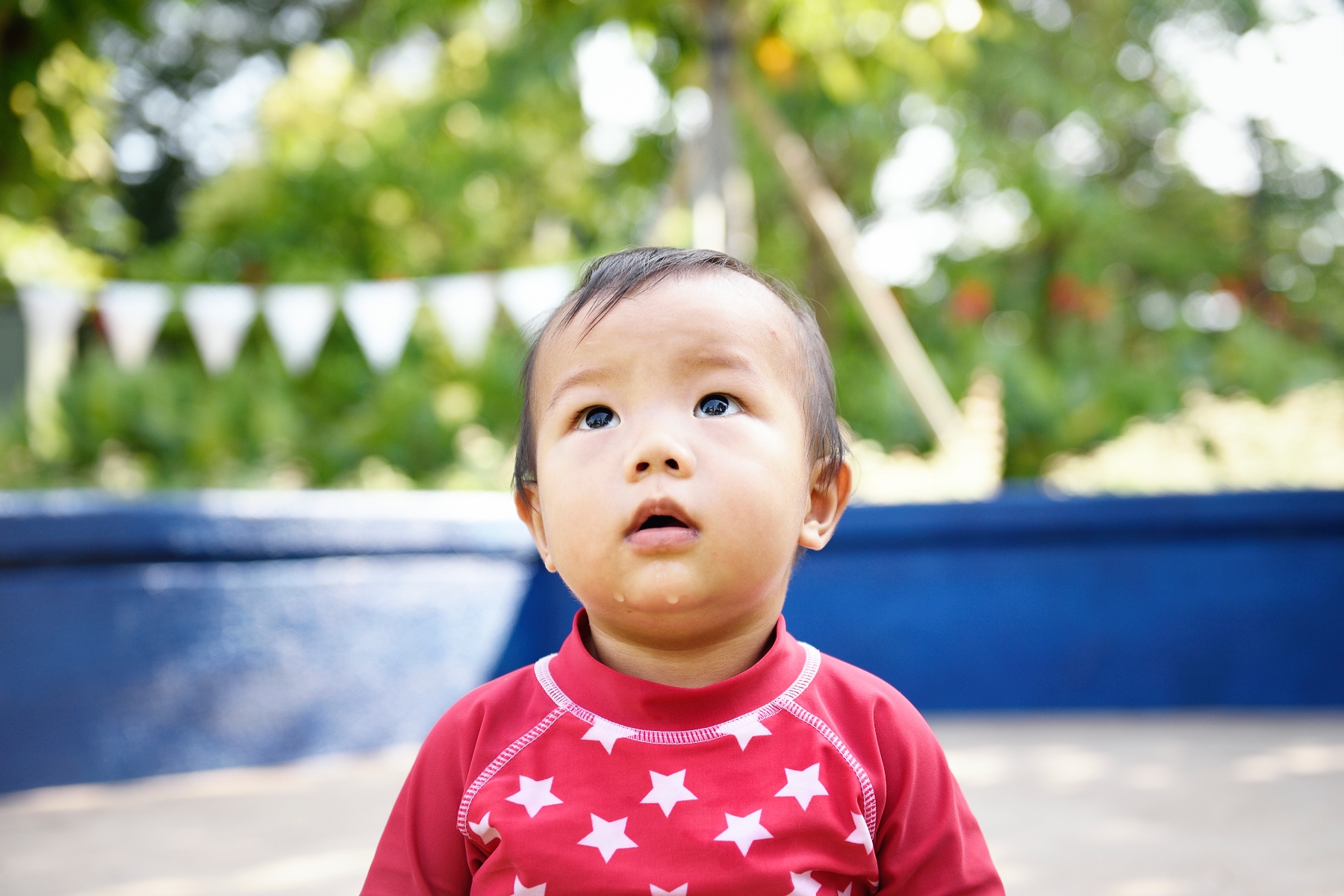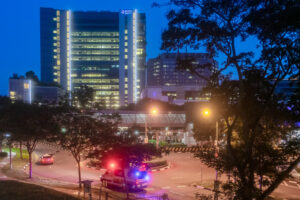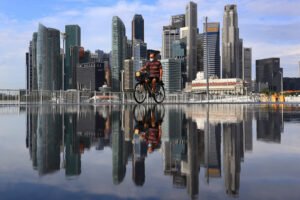Singapore is a popular destination for expats, thanks to its excellent job opportunities, tropical climate, and advanced healthcare and education systems. However, there’s one downside to life in the Lion City: it’s pricey. It’s often cited as the most expensive city in the world.
The early 2020s saw inflation growing all across the globe, and Singapore was no exception. And while the government has been doing its best to curb inflation, residents are still feeling the pinch.
Before moving to the Lion City, it’s important to have a realistic idea of how much money you’ll need. Keep reading for a complete lowdown on the cost of living in Singapore:
- The general cost and standards of living in Singapore
- How much are wages and salaries in Singapore?
- Singaporean hosing costs
- What are the costs of domestic bills in Singapore?
- How much does healthcare in Singapore cost?
- How expensive is Singaporean childcare?
- How much does studying cost in Singapore?
- How expensive are food and drinks in Singapore?
- How much does Singaporean transportation cost?
- How expensive is clothing in Singapore?
- How much do local leisure activities cost?
- Taxation and social security in Singapore
- What assistance is available for living costs in Singapore?
- Useful resources
The general cost and standards of living in Singapore
There’s no denying it: Singapore is an expensive country. While the post-COVID-19 inflation crisis has not been as severe in the Lion City as in Western countries, residents are still faced with elevated prices and a steep cost of living.
Singapore is also an outlier in the Association of Southeast Asian Nations (ASEAN) region. It stands out from its South-East Asian neighbors, with a score of 85.9 out of 100 on Numbeo’s Cost of Living Index. To put that in perspective: the next highest South-East Asian country is Brunei, with 55.2. In this way, the Lion City’s high cost of living puts it on par with Hong Kong or affluent Western cities like Zurich and New York.

That being said, it’s not all doom and gloom for people moving to Singapore. The rate of Goods and Service Tax (GST), the local version of VAT, is set at 8% (as of 2023). That’s the highest it’s ever been in this low-tax nation, however, it’s still well below the minimum VAT of 15% in the European Union (EU).
The Singaporean government doesn’t identify an official poverty line, but researchers believe that approximately one in ten Singaporeans lives in poverty. Unemployed individuals and elderly women are particularly likely to find themselves in this situation. It’s worth noting that this statistic doesn’t cover migrant workers.
In many countries, people can reduce their cost of living by moving out of big cities into smaller towns. However, this is pretty much impossible in Singapore, as it is a city-state. That being said, prices vary between districts, especially when it comes to housing. Here is what to expect from some of the most popular districts.
Costs of living in Central
Living close to the action means paying a premium. The Central area covers the following districts:
| Central districts | Locations in the district |
| 8 | Farrer Park, Little India, Serangoon Road |
| 9 | Cairnhill, Killiney, Orchard, River Valley |
| 10 | Ardmore, Balmoral, Bukit Timah, Grange Road, Holland Road, Orchard Boulevard, Tanglin |
| 11 | Chancery, Dunearn Road, Moulmein, Newton, Novena, Thomson, Watten Estate |
| 12 | Balestier, Toa Payoh |
| 13 | Braddell, Macpherson, Potong Pasir |
| 21 | Clementi Park, Hume Avenue, Ulu Pandan, Upper Bukit Timah |
District 21 is also home to Singapore’s most expensive residential street: Nassim Road.
A condominium in the Core Central Region costs an average of S$2,999,114 in 2023, well above the national average of S$1,988,920. Rental prices. on the other hand, vary depending on what type of accommodation you chose. Expect to pay between S$3,500 and 5,800 per month for an apartment in this area.
Costs of living in North-East Singapore
If you’re looking for something a little lighter on your wallet, you’ll need to head out of the city center. Singapore’s North-East Region includes expat-friendly Serangoon, a laid-back, relaxed neighborhood with plenty of facilities for families.
It’s quite possible to find a condominium here for under S$700,000; a commute into the Central area will take you about half an hour. Alternatively, rent will cost between S$1,500 and 5,000 per month on average.
Costs of living in Sentosa
With its attractive beaches, Sentosa Island is an attractive option for expats in Singapore. It’s also the only part of the country where expats without permanent residence can legally buy landed property, so if you want a garden, this is the place to be.
It’s not a cheap area by any stretch of the imagination. A bungalow in Sentosa will set you back at least S$10,000,000, with some luxury homes going for S$40,000,000 or more.
How much are wages and salaries in Singapore?
The average salary in Singapore has steadily risen over the last ten years. As of 2023, it is S$5,170 per month. Once again, that puts the Lion City way out in the lead among SoutheastAsian countries. The city in the region with the second-highest average salary is Kuala Lumpur, Malaysia, where workers earn around 25% of that amount.
There is no minimum wage in Singapore. The government’s Workfare scheme provides support for low-income workers, which it defines as people over the age of 30 earning less than S$2,300 per month. This support is only available for Singaporean citizens.
Singaporean hosing costs
How much are rental costs in Singapore?
Singapore has the most expensive rental properties in the Asia-Pacific region. Median monthly rent is approximately S$3,455 (US$2,600) per month. This number rose sharply between 2022 and 2023 thanks to a large influx of new arrivals, as well as a new government measure that makes buying a home a lengthier process.

There’s still a lot of fluctuation between prices, though. To save money on rent, it’s generally best to look outside the city center. Singaporeans often say that the further along the Mass Rapid Transit (MRT) line you live, the less you pay. While that doesn’t always hold, it’s a good rule of thumb. With this in mind, a three-room apartment in Queenstown (District 3) costs around S$3,000, whereas a flat of the same size is around S$2,500 in Hougang (District 9).
How much does a property in Singapore cost?
When it comes to buying a home, Singapore also has the most expensive accommodation prices in the ASEAN area. The median property price is now S$1,594,600 (US$1,200,000), a figure which contributes heavily to the high cost of living in Singapore.
While the Housing Development Board (HBD) offers subsidized prices to help Singaporean citizens and permanent residents onto the property ladder, these are not available for expats, unfortunately.
What are the costs of domestic bills in Singapore?
Utility bills
Singapore Power (SP) provides electricity, gas, and water for both residential and commercial properties in the Lion City. Prices tend to fluctuate and from 2022 to 2023, the average monthly SP bill was around S$130 for a four-room HBD apartment. In general, prices are higher in private accommodation.
The cost of electricity in Singapore is also on the rise. In January 2024, for instance, the price of electricity increased by 1.19c per kWh, or around S$4.39 per month. Further rises in costs are expected for electricity, gas, and water in 2024 and 2025, so residents should prepare themselves for higher monthly bills.
Telecommunications
With many different telecommunication providers in Singapore, the competition in the sector can get fierce. This is good news for customers though: if you shop around, you should be able to find plenty of good deals.
A regular SIM-only plan for your mobile will start at around S$10 per month. In addition, expect to pay at least S$30 per month for a simple home broadband plan. You can often save money by opting for a 24-month contract, rather than a 12-month one.
How much does healthcare in Singapore cost?
The Singaporean government uses programs like MediSave to subsidize healthcare for citizens and permanent residents. As an expat, you won’t qualify for this coverage. Therefore, make sure to have some form of private health insurance in Singapore, since medical bills can quickly add hefty amounts to your cost of living. Some of these providers include:
In the public system, you’ll find three tiers of fees: one for citizens, another for permanent residents, and the third for expats. Take a look at this table of Singapore General Hospital fees to see how charges vary.

When it comes to the private sector, healthcare costs will vary between providers. The Ministry of Health provides a bill benchmark tool to give you an idea of how much you will pay for different procedures.
How expensive is Singaporean childcare?
You may need to pay over S$2,000 for childcare, depending on the service you choose. Generally, the most expensive options are premium childminding centers, where your youngster will be surrounded by their peers. Many of these establishments are bilingual, so children will learn both English and Mandarin from an early age.
A long-term babysitter is a cheaper option, with prices generally starting from S$800 per month. You can also hire a domestic helper, known locally as an amah (a Malay word which translates roughly as “mother’s helper”), for roughly the same price. Not only will an amah look after your little one – they’ll also help with household chores, too.

Local expert
Gayatri Bhaumik
Insider tip
If you’d like to hire an amah, be sure to go through a reputable agency. Many amahs migrate to Singapore from other parts of Southeast Asia, and an agency will help take care of the work permit requirements.
How much does studying cost in Singapore?
Education in Singapore can be pricey. At the primary and secondary levels, the public system has four tiers of fees. Singaporean citizens pay the least, followed by permanent residents. Next come international students from ASEAN countries, with other international students paying the most.
The Ministry of Education provides a fee calculator that allows you to see how much a Singaporean public education will cost for your child.
Private school fees can vary and usually cost a minimum of S$20,000. Many employers in Singapore offer expat workers an education package for their kids, which can help soften their cost of living.
At the university level, international students pay more than citizens or permanent residents. For an idea of how much a degree at a Singaporean university might cost, take a look at these tuition fees from the National University of Singapore (NUS). Prices vary by subject: a business degree costs around S$30,000 per academic year, while each year of a medical degree will set you back just under S$170,000.
How expensive are food and drinks in Singapore?
Groceries
The average Singaporean spends between S$100 and 300 on groceries. That’s significantly higher than most other ASEAN countries. However, as a proportion of total household spending, it’s quite low. Singaporeans spend just 8.4% of their monthly goods and services on food and drinks to be consumed at home.
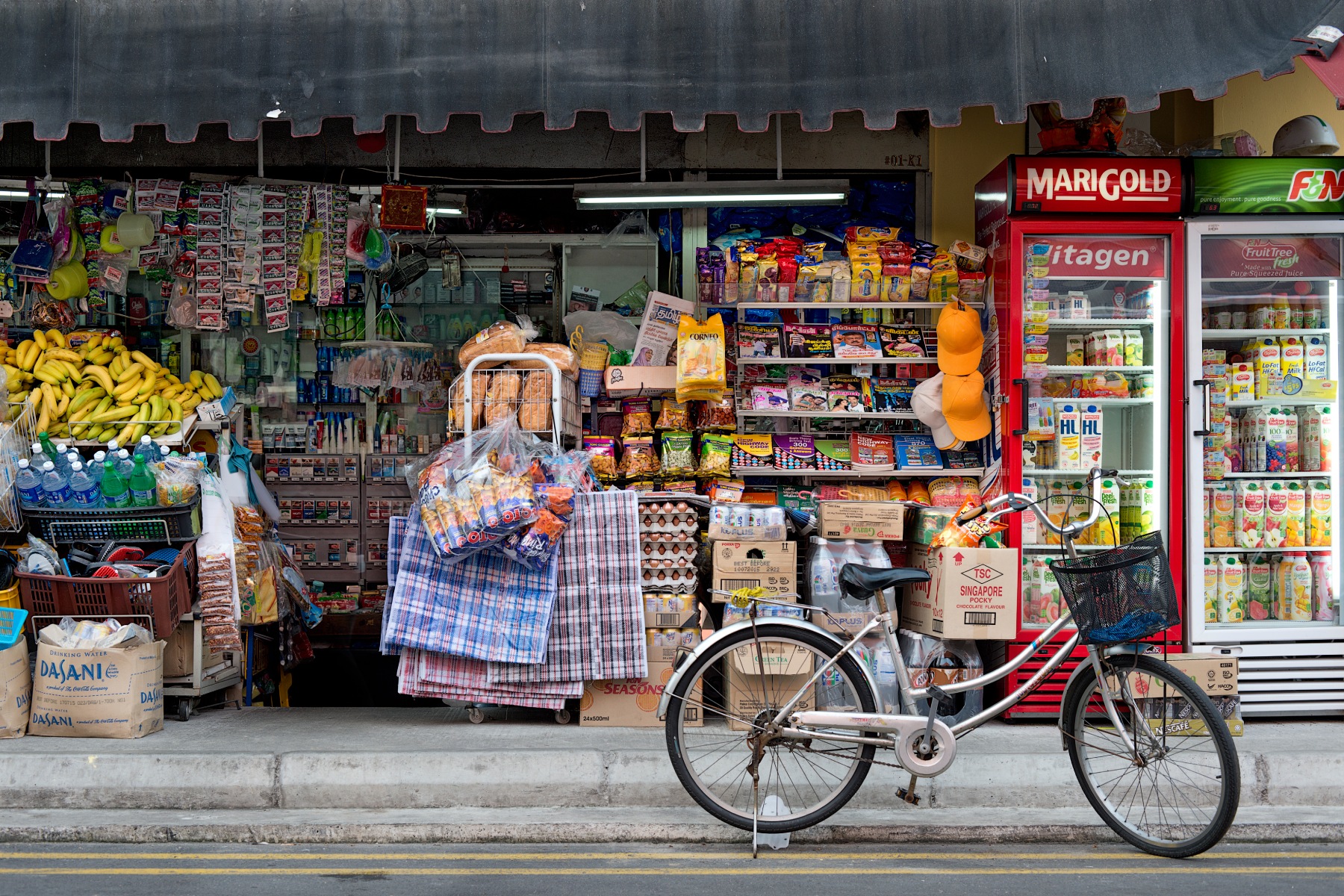
To save money on groceries, it’s worth eating like a local, as Western-style food costs more. For example, a kilo of cheese costs almost twice as much as a kilo of chicken fillets, and rice is significantly cheaper than bread.
Restaurants
Residents of the Lion City love dining out. This is aided by the fact that it’s very easy to eat out on a budget in Singapore. According to their findings, breakfast is the cheapest meal of the day, costing an average of S$4.81 at surveyed stalls, food courts, and restaurants. Lunch is an average of S$6.01, while dinner comes in at S$6.20.
To eat out for less, stick to hawkers’ carts, street food stalls, and local restaurants. Establishments serving Western-style meals will be pricier. For example, a meal from McDonald’s will cost around S$10.00.
Beer, wine, and spirits
If you want to grab a drink but also want to reduce your cost of living, head to supermarkets and convenience stores in Singapore. A bottle of beer here is about half the price as it is at a restaurant or bar. There’s a similar price ratio for wine and spirits, so if you want to save some money on a night out, make sure to do your shopping before you hit the town.
As with many other things, Singapore has the highest beverage prices in the Southeast Asia region. This is also aided by the country’s high alcohol tax.
Coffee
In comparison with the rest of the world, coffee prices in Singapore are on the higher end of the spectrum. If you’re sticking to a simple order like an Americano or an espresso, your order will usually come to under S$2. On the other hand, more elaborate drinks, like a frappuccino, could cost over S$10.
How much does Singaporean transportation cost?
Public transport
Singapore has an excellent public transport system that connects almost every corner of the island with buses, trains, and the MRT metro. Fares vary according to the distance traveled, however, there are discounts for children, students, senior citizens, and disabled people.
To save money on your transit, your best bet is to get a pre-paid card. For comparison, the shortest journey on a basic bus costs S$1.90 in cash, but S$1.09 if you tap in with your card. You can also register your contactless card (i.e. Visa contactless debit/credit cards) with SimplyGo and pay for the same prices without possessing a physical card.
You can work out the cost of a journey using the government’s fare calculator tool.
Private transport
The Singaporean government limits the number of private vehicles on the roads of the Lion City. This means that if you’d like to own a car, you’ll first need to bid for a certificate to buy one. The price for this has shot up in recent years, with people paying over S$146,000 simply for the right to buy. This means that the process of buying a vehicle can be incredibly expensive.
If you’d like to take a taxi, you might want to check the fare in advance. Companies are free to set their own prices in Singapore within certain parameters. To get an idea of what charges you can expect, take a look at the Land Transport Authority’s website.
How expensive is clothing in Singapore?
In general, you’ll find something to suit all budgets in the Lion City. Luxury shopping malls offer steep prices, but there are plenty of outlets selling affordable high-street brands. Savvy shoppers should head to outlet stores, where you can find sales as generous as 80% on branded clothes.
How much do local leisure activities cost?
Gym rats may be disappointed to hear that the average cost of a gym in Singapore is around S$120 per month. There are cheaper options available, however. One option is ActiveSG, public, government-supported neighborhood gyms and fitness centers which offer expat-friendly discounts. Additionally, various gyms offer discounts to students or senior citizens.
On the other hand, if your idea of a good time is watching a film, then it’s worth scheduling a trip to the cinema. A ticket will typically cost you S$15.
Taxation and social security in Singapore
The Inland Revenue Authority of Singapore (IRAS) is responsible for taxation in the Lion City. Singapore has a progressive tax system, meaning that the first S$20,000 you earn in a year is tax-free.
Taxes will then gradually increase the more you earn. To give you an idea, here are the income tax rates for the 2024 year (affecting income earned in 2023):
| Income | Tax rate |
| Up to S$20,000 | 0% |
| S$20,000 – S$30,000 | 2% |
| S$30,000 – S$40,000 | 3.5% |
| S$40,000 – S$80,000 | 7% |
| S$80,000 – S$120,000 | 11.5% |
| S$120,000 – S$160,000 | 15% |
| S$160,000 – S$200,000 | 18% |
| S$200,000 – S$240,000 | 19% |
| S$240,000 – S$280,000 | 19.5% |
| S$280,000 – S$320,000 | 20% |
| S$320,000 – S$500,000 | 22% |
| S$500,000 – S$1 million | 23% |
| Over S$1 million | 24% |
The Central Provident Fund (CPF) is the country’s main source of pensions. However, this is only available to citizens and permanent residents. Foreigners working in Singapore will need to organize their own private pension.
What assistance is available for living costs in Singapore?
Expats feeling the pinch are unfortunately out of luck when it comes to financial aid in Singapore. While the government provides some social security programs, these are strictly limited to citizens and permanent residents. If you don’t fall into either of these categories, you’ll essentially have to fend for yourself.
Singaporean citizens can enjoy benefits like an HDB loan to help them get onto the property ladder; baby bonuses to provide financial support for their children; a concession for a migrant domestic worker; and, if they are low earners, the Workfare supplement. As an expat, you may be able to avail of some of these benefits if you are legally married to a Singaporean citizen.
Useful resources
- Gov.sg – information on how the Singaporean government is working to lower inflation
- iPrice Price Comparison Site – Singapore’s largest price-comparison site, perfect for putting prices of material goods side-by-side
- Numbeo – compare Singapore’s cost of living with other cities around the world
- PWC – information on Singapore’s tax system on personal income, including rates, deductions, and foreign tax reliefs
